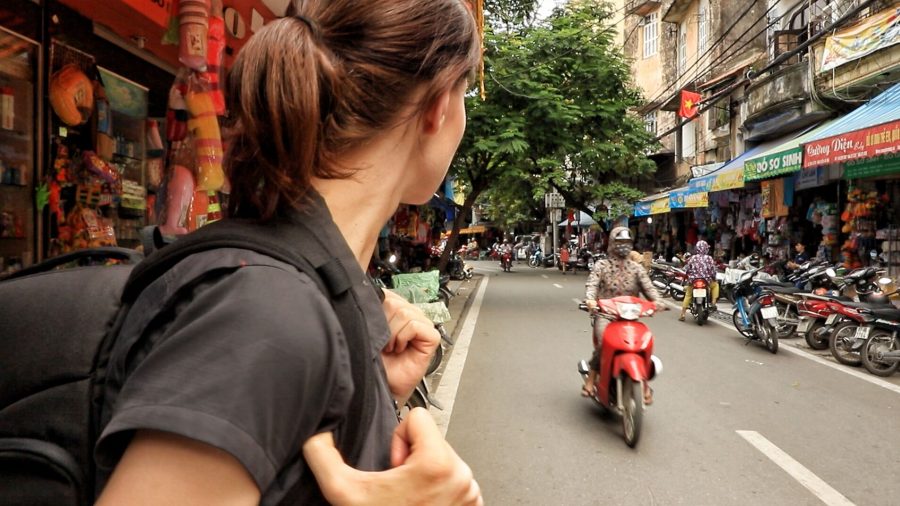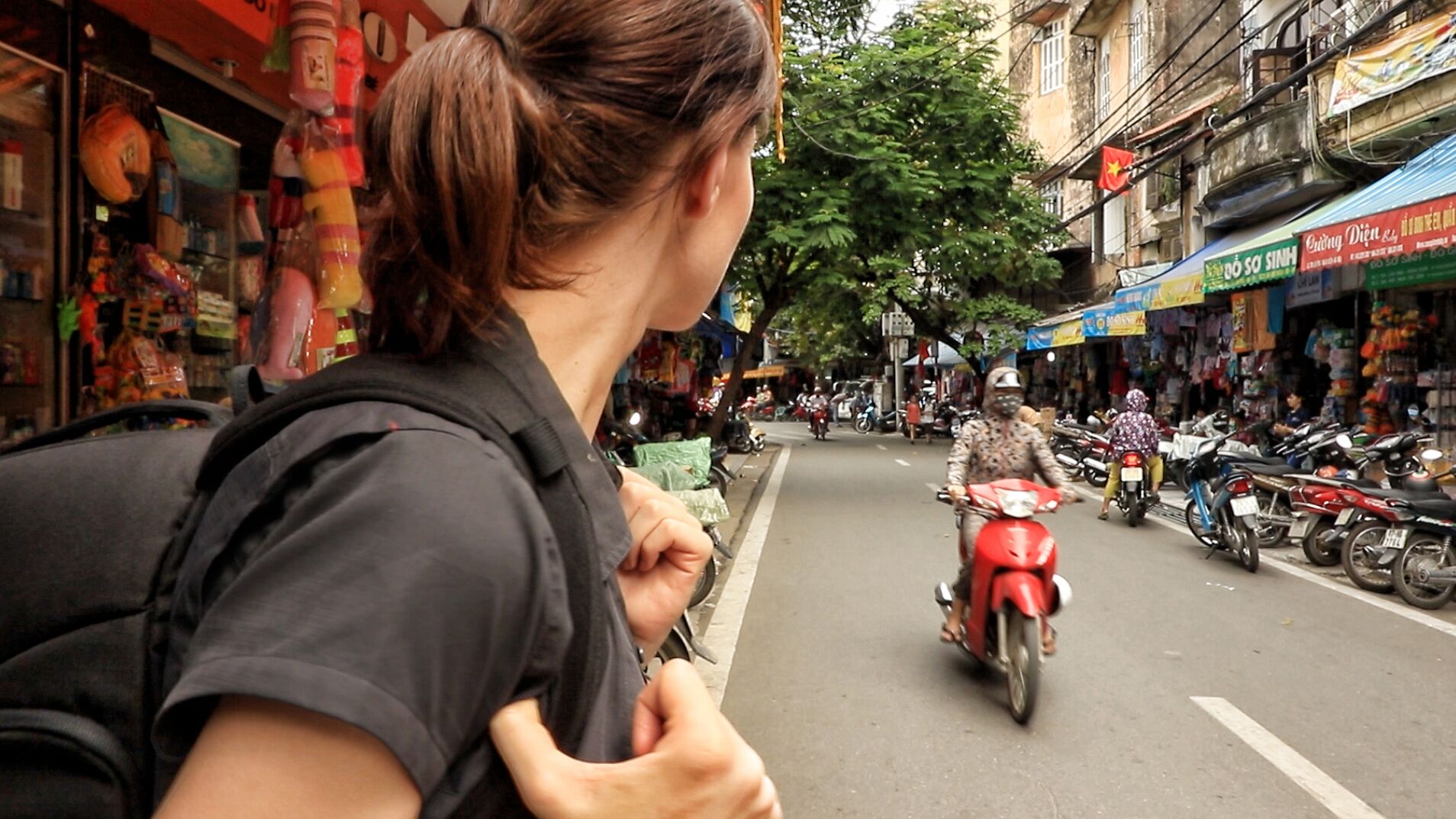
Rhino Horn Investigation Reveals Another Shocking Crisis Facing South Africa
One hears so many different reasons why rhino horn is used in Asia, so travelling there to get to the bottom of it all was an important step for me when I was researching for my film, ‘STROOP’… writes Bonné de Bod. I spoke to many locals and eventually had a breakthrough when we got […]

One hears so many different reasons why rhino horn is used in Asia, so travelling there to get to the bottom of it all was an important step for me when I was researching for my film, ‘STROOP’… writes Bonné de Bod.

I spoke to many locals and eventually had a breakthrough when we got to sit down with a cancer patient in an upmarket suburb of Hanoi.
Her treatment was a combination of chemotherapy and ground-up rhino horn, which she would then drink in luke warm water. She believed it cured her cancer.

On the other side of town at the Bach Mai hospital, a nuclear medicine and oncology centre, hundreds of patients were waiting their turn to sit for treatment at a chemotherapy machine.
The oncologist there told me that despite her pleading with her patients not to use rhino horn, they still did… believing that combining western and eastern medicines would cure them from the scourge taking hold there.

Cancer in Vietnam has risen exponentially and according to reports, there aren’t enough chemotherapy machines to keep up with the number of patients.
It’s difficult to gauge but the World Health Organisation estimates that new cancer cases in Vietnam rose from 70,000 in 1998 to 150,000 in 2012, an increase of more than 100 per cent in a very short space of time… a frighting statistic.

A closer look reveals that around 22 000 new cases of lung cancer are recorded each year and is set to rise by nearly 60% to roughly 34 000 new cases a year by 2020.
This dramatic rise in lung cancer is contributed to a ‘silent killer’ called air pollution. And while searching for rhino horn, we saw the ravaging effects of air pollution throughout South East Asia.

Mopeds not by the hundreds or thousands, but by the millions, zip around Asia’s cities spewing out nitrogen dioxide or NO 2 emissions and trust me, there’s no fresh air wafting in.
We suffered splitting headaches and thick grime in our clothing and on our skin. People who live in the cities wear masks and watch state controlled television for the Air Quality Index or the AQI to be read out in the mornings. When it hits the “dangerous” or red zone as it frequently does, it’s not safe to venture outdoors… in other words, it is actually dangerous to your health to go outside, even with a mask.

A poverty stricken nation after the Vietnamese war, twenty years of rapid economic growth has made Vietnam the envy of all developing nations. It’s considered a success story with the fastest wealth growth on the planet, it’s even ahead of China.

But has development come at the cost of their population’s health?
This year’s World Environment Day theme of air pollution couldn’t come at a better time.
Returning from the visible effects of air pollution in Hanoi, I was relieved to be back in Joburg breathing the city’s air from our tree filled suburbs.
I never for one minute thought that our air quality was anything close to that of South East Asia.
But we’ve all spent enough time under candlelight to know that we are facing an energy crisis. Eskom provides 95% of South Africa’s electricity by burning coal and it doesn’t take a rocket scientist to know the huge impact this has on the environment.
And it is this ‘environment’ that holds the air we breath.
Let’s look at South Africa’s coal province, Mpumalanga. More than 80% of our country’s coal mining production happens in this region and it holds 90% of the country’s coal-fired plants.
Shockingly, it is now ranked as the province with the highest levels of air pollution, in fact it’s the global hotspot for NO 2 emissions making it a global pollution hotspot, according to an analysis study done by Greenpeace in 2018.
They go on to say “South Africa has the most polluting cluster of coal-fired power stations in the world.”
This was again reiterated by satellite data retrieved from the Dutch-designed Tropospheric Instrument which also showed that Johannesburg and Pretoria are subject to this pollution, affecting millions of people.
It’s shocking to see, especially when you’ve actually seen the long term consequences of pollution like this.
We’ve just had elections and when you read through the political parties’ manifestos, anything relating to the environment, including the air we breathe, falls pretty low on the list.
I understand that we are overwhelmed by many problems in the country, but clean air is the right of every citizen. And more importantly, if we look to Vietnam as an economic development model, we should be turning the other way as fast as we can to put all our focus on to renewable energy.
I do hope that this will be part of the new dawn… and if other countries can do it, I see no reason why we can’t. There is a good case in point, Beijing. A city known for its smog clouds has taken steps to turn things around.
In the short period of five years, the annual fine particle pollution levels in the city’s air fell by 35% according to a recent report by UNEP, the United Nations Environment Programme.
Of course a number of actions were implemented to become the first city on the planet to achieve this massive drop in such a short space of time. Greening transport with better standards for fuel and vehicles whilst investing in electric busses and e-vehicles.
In the late 90’s Beijing was controlled by the burning of coal and today it constitutes to less than 5% of the total energy consumption.
That’s a very impressive turnaround and there’s nothing stopping us from doing that. Our country is in desperate need of economic growth but it doesn’t have to be at the cost of a clean environment and ultimately the air we breath.
* Bonné de Bod is an award winning television presenter and filmmaker of the
multiple award winning documentary feature film ‘STROOP – journey into the rhino
horn war’. She is now looking at air pollution as the subject matter for her next film
due for release in 2021.
